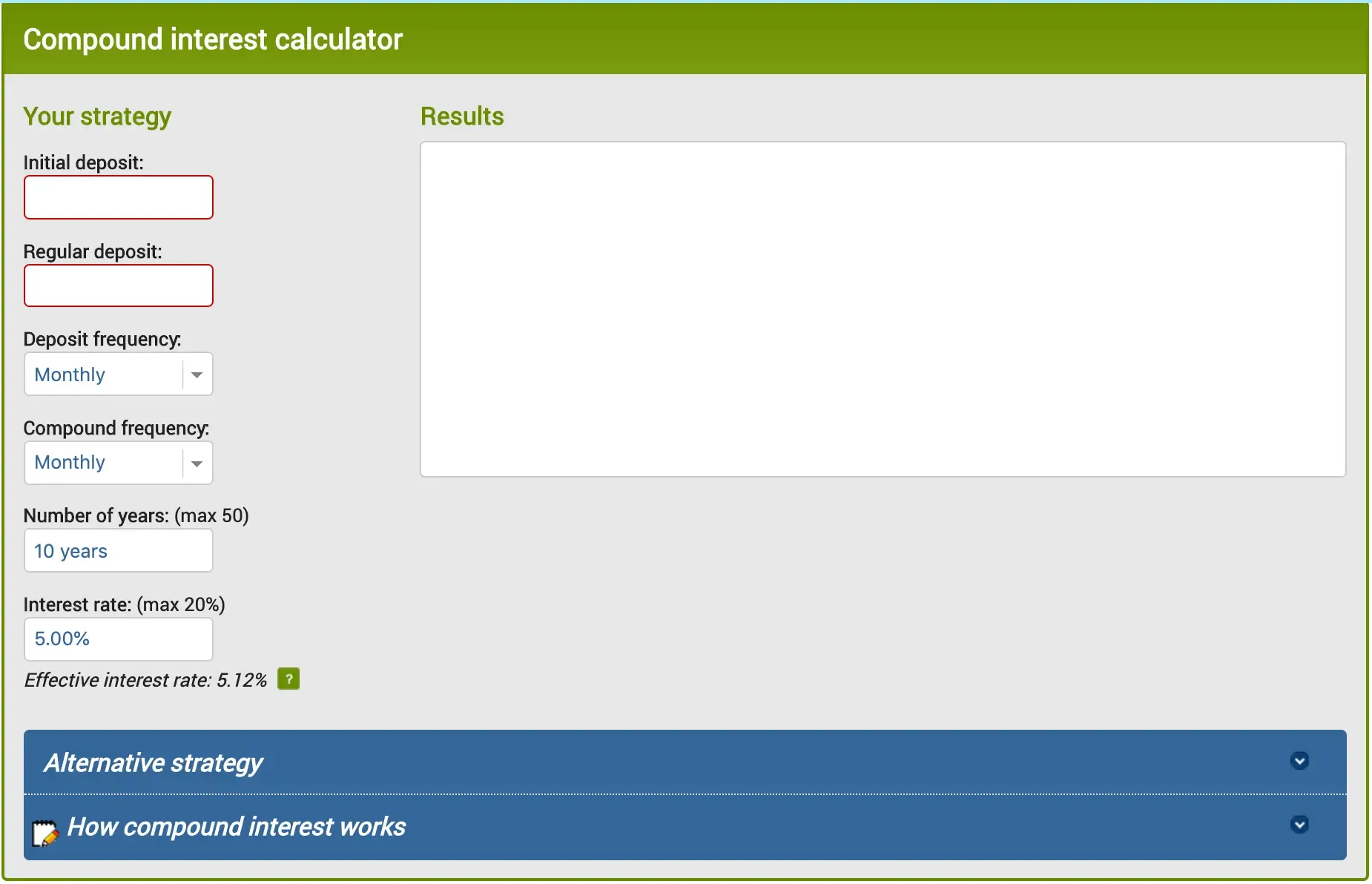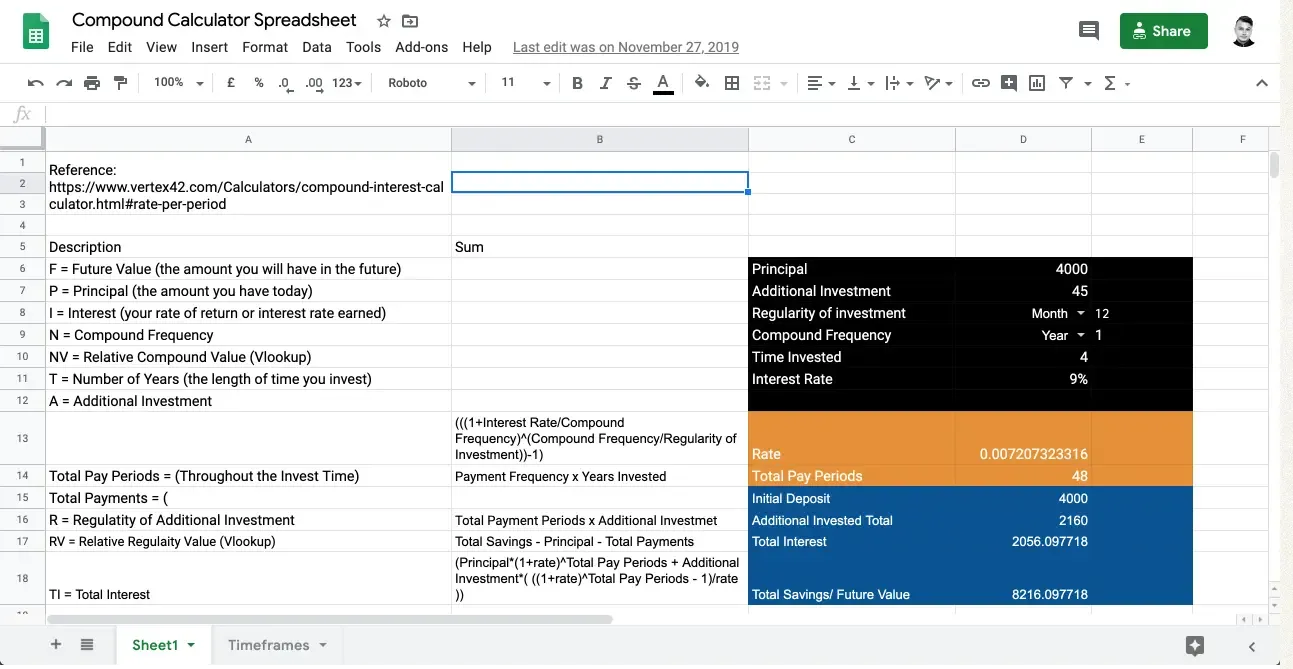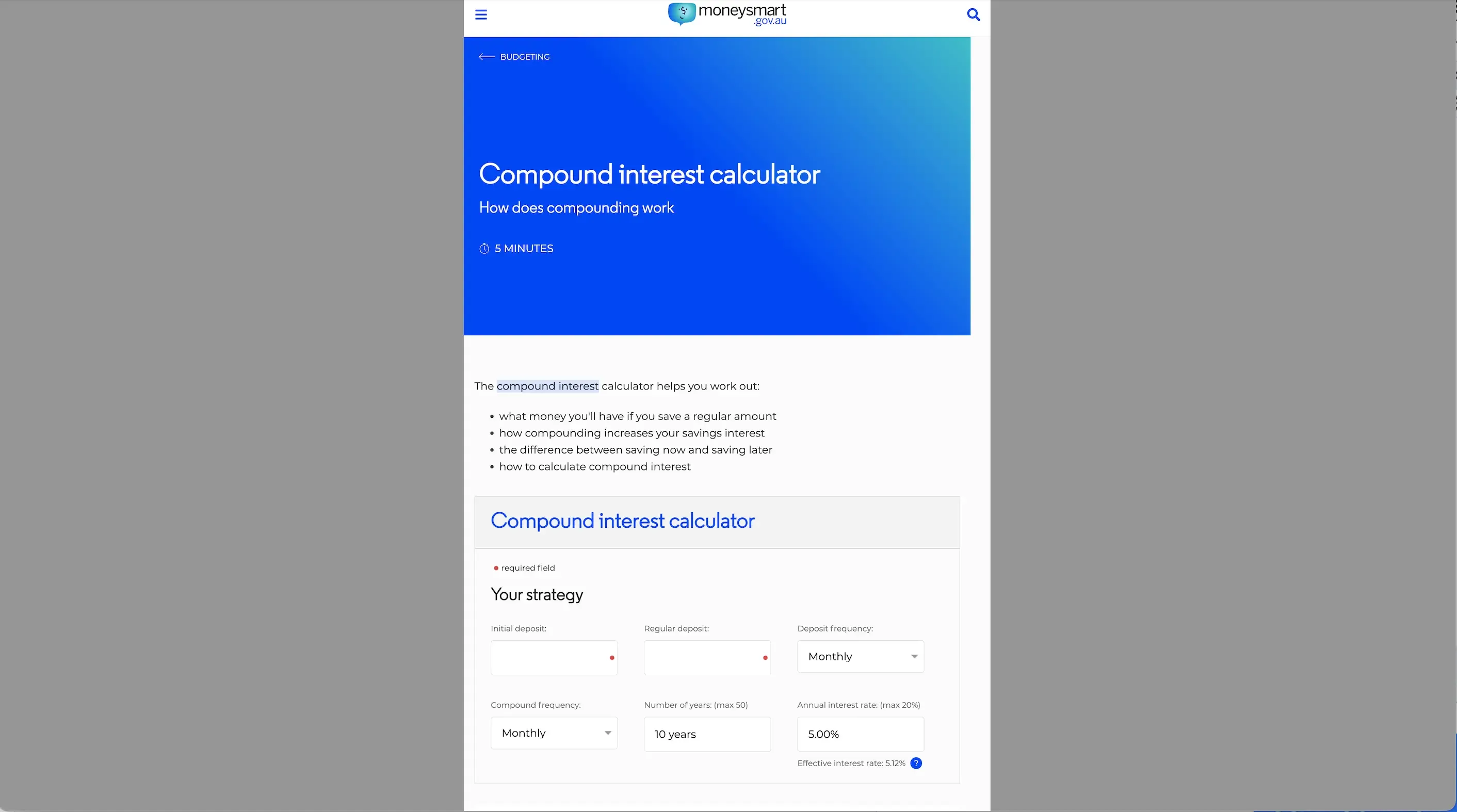Introduction
Vue.js Compound Interest Calculator was developed from a personal interest in finance and investing. The goal was to improve on common calculators by making them more intuitive, accessible, and user‑friendly.
Goals & Objectives
The primary objective was to address usability challenges found in the MoneySmart compounding calculator and deliver a superior experience in both UI and functionality.

Original MoneySmart Calculator
Research
The original MoneySmart compounding calculator showed several UX and UI issues:
- Navigation: The page felt cluttered, making the tool harder to find and use.
- Initial view: Elements appeared like inputs but weren’t interactive, causing confusion.
- Inputs: Fields didn’t maximise available width, especially on mobile; clicking outside boxes could still focus inputs.
- Results display: Results looked like a large input field, creating ambiguity.
- Learning curve: Some fields began blank and only signalled required input with red outlines, without clarifying expected data.
These findings guided a set of design assumptions used to drive the redesign.
Design & Ideation
- Aesthetics: Reduced a busy palette to a minimal, brighter scheme to highlight key data.
- UI improvements:
- Full‑width inputs to better use space, especially on mobile.
- Resolved alignment issues across the form and results.
- Reworked results so they no longer resembled an input.
- Pre‑filled data on load to provide context.
- Prevented accidental input focus from outside clicks.
- UX enhancements:
- Stripped non‑essential content to reduce clutter.
- Pre‑filled all inputs with sensible dummy data to lower the learning curve.
- Separated and optimised the results area for easier interpretation.
Product Development & Iteration
1. Prototype creation with Google Sheets
After researching, I used equations from Vertex42 to construct a working MVP in Google Sheets, adjusting syntax to suit Sheets and validating the maths and behaviour.

Setting up calculations in the Google Sheets MVP
Initially I considered equations from thecalculatorsite, but they didn’t account for additional investments.
2. Design initiation
I began with a Bulma template, refining components to match the intended look and feel. Static data was used to simulate the final appearance and confirm layout decisions.
3. Transition to Vue.js
I refreshed Vue fundamentals and implemented two‑way binding for inputs. The spreadsheet equations were integrated and adapted for Vue.js, with outputs verified against the Vertex42 calculator for consistency.
4. Data visualisation
A stacked bar chart (mirroring MoneySmart’s approach) was implemented using vue-chartjs. By combining a static stacked example with a reactive chart pattern, I produced a visualisation that updates based on user inputs, supported by a loop generating per‑year data.
5. Refinements & deployment
With core functionality stable, I refined colour choices and added a disclaimer. Post‑deployment, I identified follow‑ups such as stricter input validation and making the chart refresh without button interaction.
 Final version of the Vue calculator
Final version of the Vue calculator
Results
The redesigned Vue Compound Interest Calculator provides a cleaner, faster, and more understandable experience. Notably, the Australian Government’s MoneySmart team later released a Beta version of their calculator that appears to incorporate several of the UX improvements and assumptions explored here.
 MoneySmart relaunch (Beta) as of 18/10/23
MoneySmart relaunch (Beta) as of 18/10/23
Reflections
This project blended user‑centred design with iterative development and continuous learning. It reinforced the value of clear assumptions, pragmatic prototyping, and validating behaviour against trusted references.
Source: Compound Interest Calculator